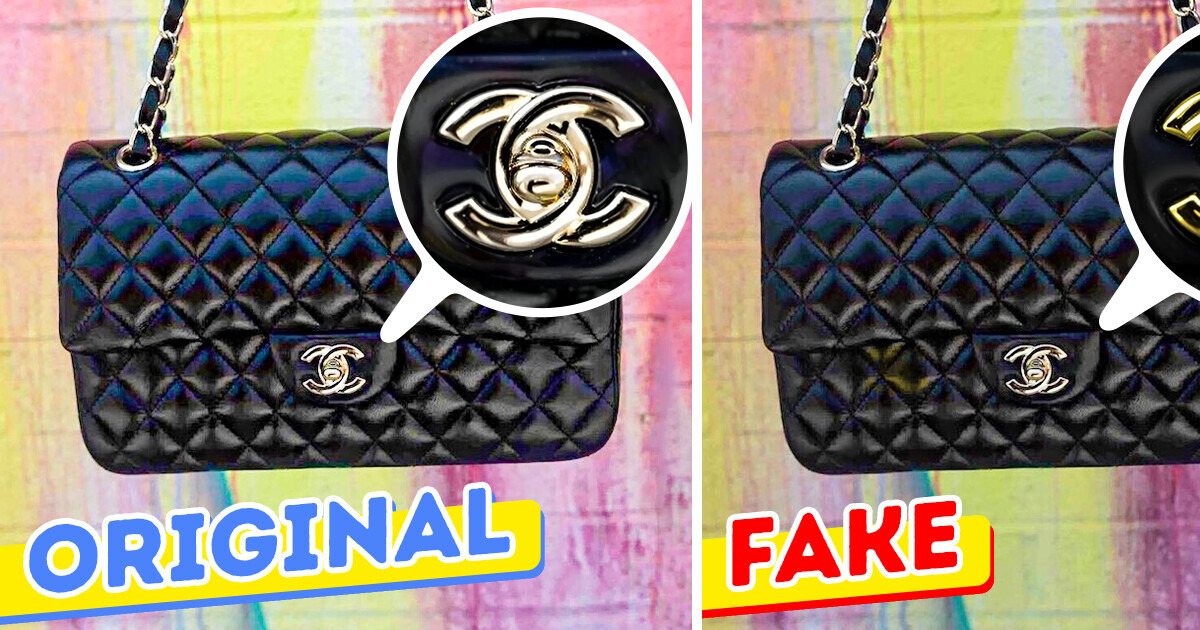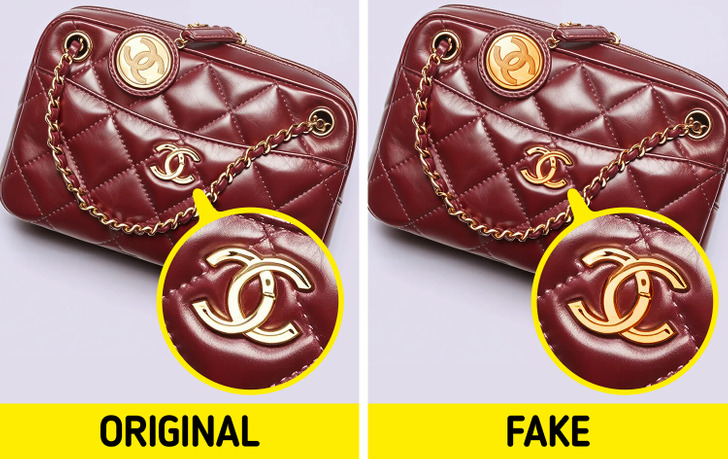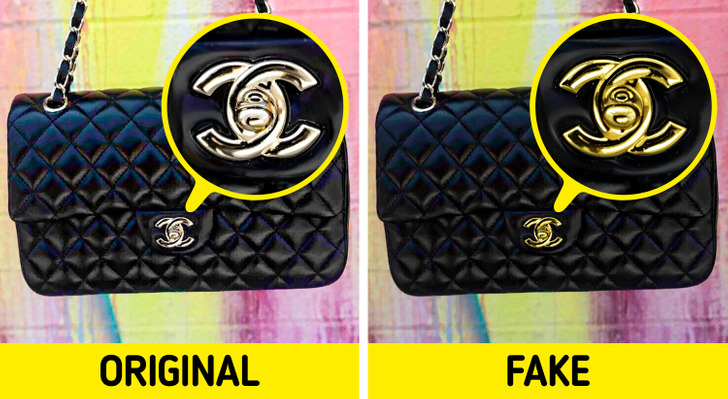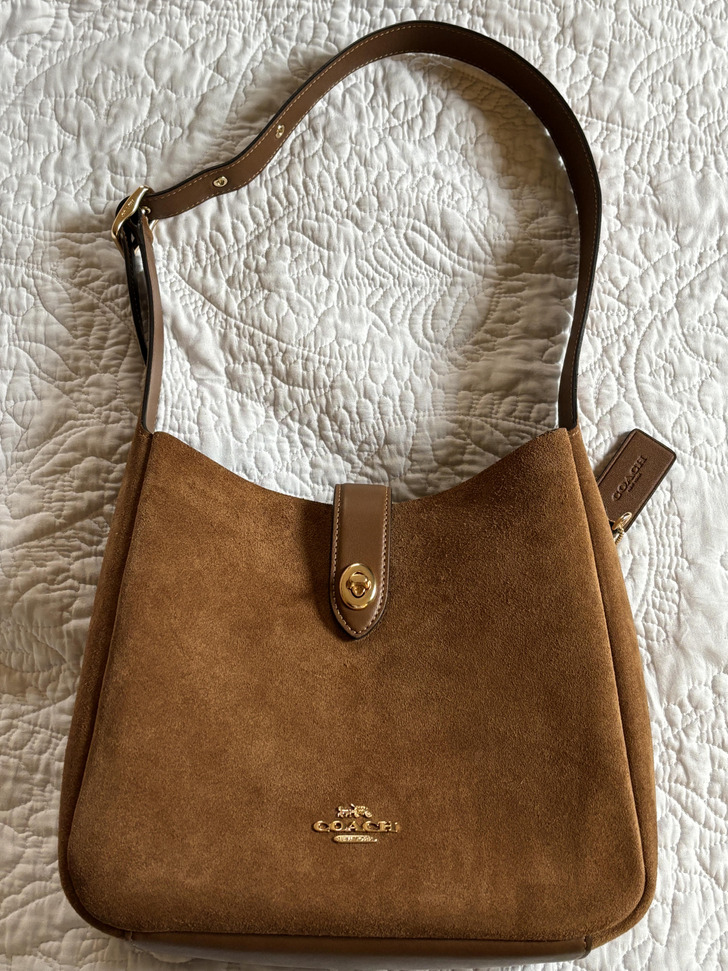How to Easily Spot Fake Versions of Popular Branded Items / Bright Side
Branded things are very expensive. So when we find out that we have paid a decent amount of money for a low-quality replica, we may feel quite frustrated. Not only do replicas wear out and fall apart faster, but they can also pose a danger. We decided to find out how you can spot a fake before you buy it.
Chanel bags
Chanel bags are renowned not only for their exceptional design and top-tier materials but also for the meticulous attention to detail that the brand puts into every aspect of its products. One of the key elements of these bags is the consistency in the color of the metal fittings. Whether it’s the exterior or the inner components, all the metal pieces on a Chanel bag are made from metal that matches the overall color of the bag. This consistency reflects the brand’s commitment to quality and elegance.
Another important detail is the logo clasp. On authentic Chanel bags, the clasp is securely attached with screws that have a distinctive star-shaped head. Older bags may feature flat screws, but if you come across a bag with cross-shaped screws, it’s a red flag indicating that the item is likely a counterfeit. The logo itself is another indicator of authenticity. The letters of the logo should be raised and three-dimensional, contributing to its premium look and feel. Any deviation from this standard can be a sign that the bag is not a genuine Chanel product. These subtle, yet crucial, details are part of what makes Chanel bags stand out as symbols of luxury and craftsmanship.
iPhone
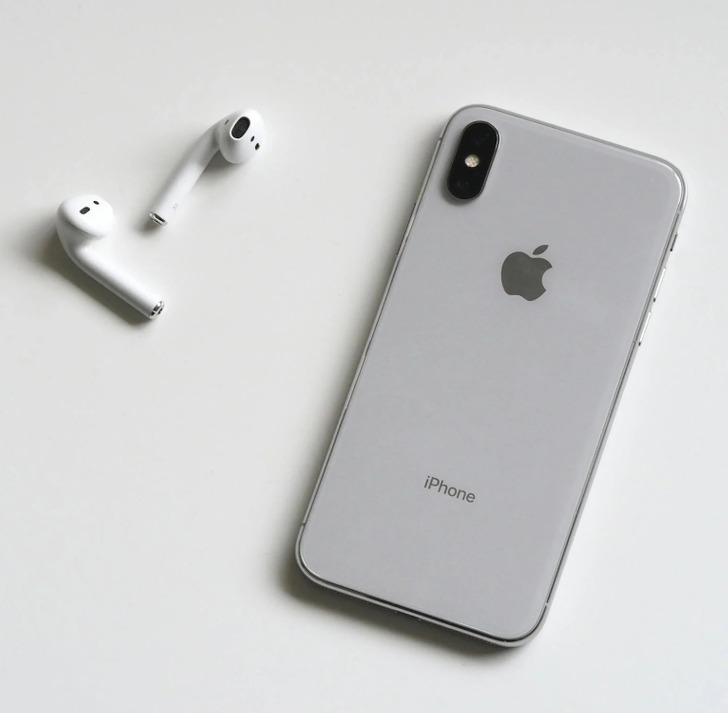
To verify the authenticity of your phone, you need to know the International Mobile Equipment Identity (IMEI). On an iPhone, this information can be obtained by dialing *#06#. Then you should compare this number with the one on the box. If the numbers don’t match, most likely, you hold a cheap copy in your hands.
Some sellers play tricks and offer original devices, but not new ones, but those that have already been repaired. You hardly want to pay a significant amount of money for an iPhone that has previously been found defective. To find out the history of the device, it’s enough to look at its identification number again. The letter “M” at the beginning indicates that the phone is brand new. The letter “F” means that it has been restored.
Coach bag
When checking for a real Coach bag, start by inspecting the logo. The authentic logo has a sharp, pointy “A” with a clean, crisp heat stamp, while the fake one tends to have a flat, uneven emboss. Also, the stitching on a genuine bag is much neater. Another key thing to look for is the Coach Creed patch, which contains a brief description and serial number. If it’s just stamped or inked, it’s fake. Keep in mind, though, that Coach bags from the 60s didn’t have serial numbers, so this only applies to bags from the 70s onwards.
Next, check where the bag is made. Don’t automatically assume a “Made in China” tag means it’s fake—Coach does produce some bags there. However, make sure the bag feels like quality leather, not synthetic or cheap canvas. Coach bags are known for their craftsmanship, so if it feels subpar, it’s likely a fake. Lastly, take a look at the zipper—authentic Coach bags use leather zipper pulls and often have “YKK” stamped on them, indicating a high-quality zipper. These small details are your best bet for spotting a fake.
Here are 10 easy ways to spot counterfeit goods.
- Stitching — Authentic products usually have neat, straight stitching with more stitches per inch. Fake items tend to have less stitching and uneven lines because they’re cheaper to make.
- Fastenings — Pay attention to zippers and pulls, especially on bags and jackets. Counterfeit ones are often shiny, lightweight, and may chip over time. Real ones have a matte finish, feel heavier, and are easier to use.
- Logo — The logo on designer items should be perfect, with no missing details. Fakes often try to mimic the look but might have a poorly made or missing logo altogether.
- Buttons — When buying coats or shirts, check the buttons. Genuine brands engrave their name on the buttons, while counterfeit ones use cheap, unlabeled plastic that can be flimsy.
- Leather — Real leather has a slightly uneven texture and a strong smell, while fake leather feels smooth and even. Also, real leather doesn’t have a shiny finish, so if it’s glossy, it’s likely a fake.
- Spelling — Look for spelling errors, especially on logos and tags. Even the best fakes sometimes misspell brand names or other details.
- Fabric — Authentic items are made with high-quality, durable fabrics. If the fabric feels light, cheap, or has visible pulls, rips, or faded color, it’s probably fake.
- Packaging — Genuine products come with high-quality packaging that fits the item perfectly. If the packaging feels flimsy or lacks branding details like tissue paper or drawstring bags, it’s likely a counterfeit.
- Prices — If the price seems too good to be true, it probably is. Designer brands rarely offer big discounts, so if you find something for 75% off, it’s likely a fake.
- Supplementary Materials — Real products, especially tech, should come with manuals, instructions, and extra accessories. Counterfeit items might be missing these or lack any additional pieces.
Here’s another batch of really helpful tips that can make it much easier for you to spot a fake. Whether you’re buying online or in person, these pointers can help you avoid getting tricked by counterfeit products. Keeping an eye on these details can give you a better understanding of how authentic items should look and feel, and make you more confident in spotting the fakes. So, let’s dive into these additional tips that can be a real game-changer when it comes to distinguishing genuine products from knockoffs.
